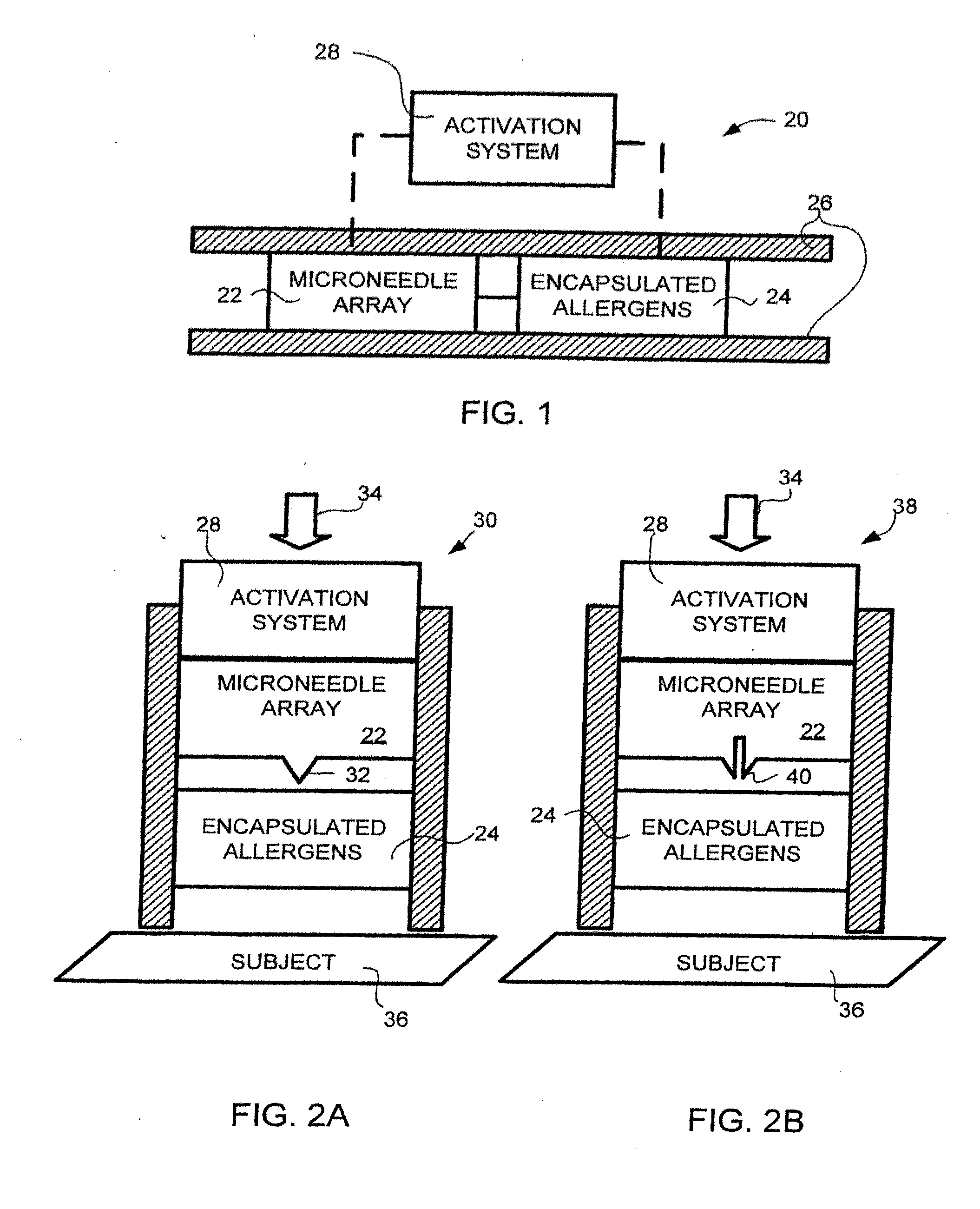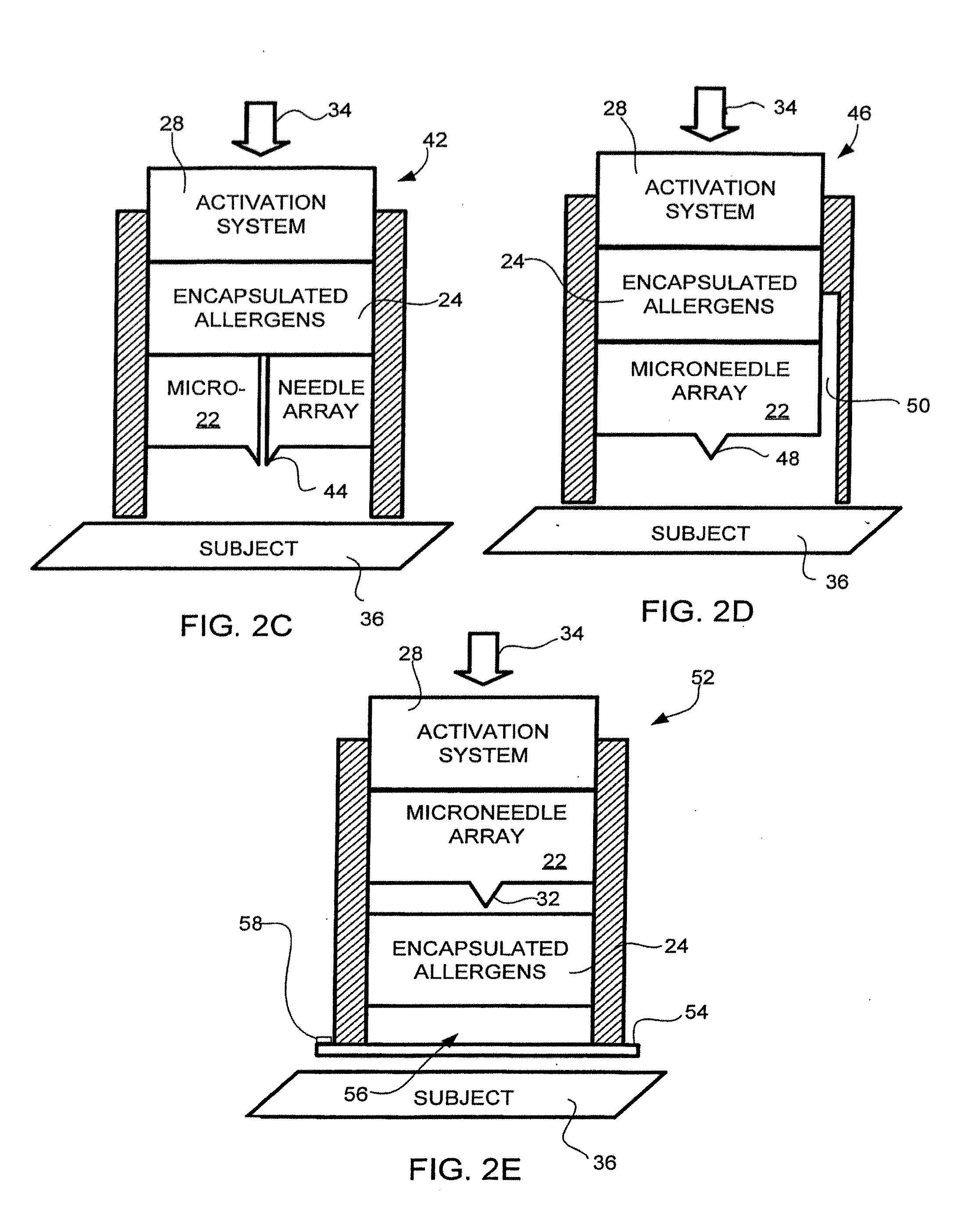Minimally invasive allergy testing system
a technology of allergy testing and minimal invasiveness, which is applied in the field of medical conditions system and method, can solve the problems of large skin area affected, blood testing does not surpass the sensitivity, specificity, and predictive value of skin tests, and the intradermal test is even more invasive, so as to simplify and expedite the allergy testing process. , the degree of reaction, the effect of reducing the invasiveness of the tes
- Summary
- Abstract
- Description
- Claims
- Application Information
AI Technical Summary
Benefits of technology
Problems solved by technology
Method used
Image
Examples
Embodiment Construction
FIG. 1 schematically illustrates an embodiment of a minimally invasive allergy testing system 20. The minimally invasive allergy testing system 20 has a microneedle array 22 which is coupled to an array of encapsulated allergens 24. The microneedle array 22 has at least one microneedle, and preferably a plurality of microneedles which may be spaced in a linear array, a two-dimensional array, or any other spacing desired. The microneedles 22 may have a height of about 50-300 microns and a diameter of about 10-80 microns in order to penetrate a subject's skin, although other embodiments may have other dimensions. (Skin not illustrated in this view.) The microneedle array may be manufactured out of a number of different substances, for example, silicon, glass, metal, quartz, or plastic. Due to its attractive micromachining properties, silicon may be anisotropically etched using chemical and reactive ion etching processes to fabricate the microneedles, although other materials and manuf...
PUM
 Login to View More
Login to View More Abstract
Description
Claims
Application Information
 Login to View More
Login to View More - R&D
- Intellectual Property
- Life Sciences
- Materials
- Tech Scout
- Unparalleled Data Quality
- Higher Quality Content
- 60% Fewer Hallucinations
Browse by: Latest US Patents, China's latest patents, Technical Efficacy Thesaurus, Application Domain, Technology Topic, Popular Technical Reports.
© 2025 PatSnap. All rights reserved.Legal|Privacy policy|Modern Slavery Act Transparency Statement|Sitemap|About US| Contact US: help@patsnap.com



